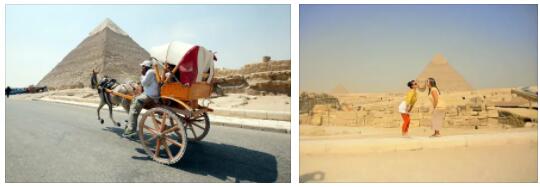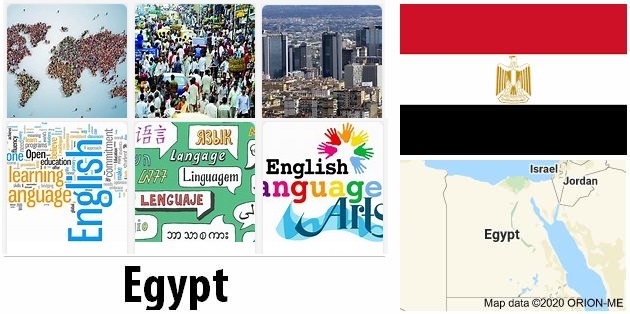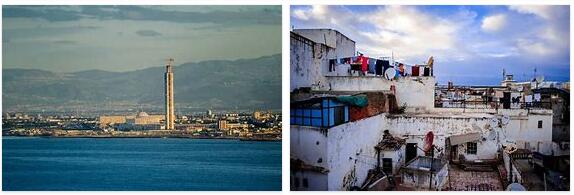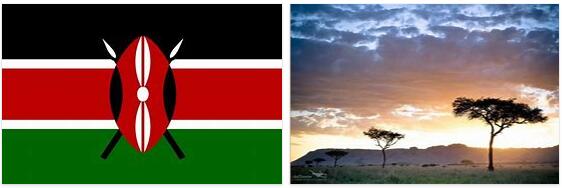Egypt Everyday Life
What is the Arab Spring?
Perhaps you’ve heard of the “Arab Spring” before? This is not a special time of year that may only exist in Arab countries, but a political movement that got a lot of people moving. They wanted to change and improve the prevailing conditions.
But for many Egyptians their economic situation has not improved after the “Arab Spring” and they are still very poor. Around a quarter of the population in Egypt is considered poor and has to fight to survive.
Many of these poor live in the north of the country and mostly in rural areas. And in rural areas, illiteracy rates and infant mortality rates are still high. More than 30 out of 100 Egyptians cannot read or write.
Transport in Egypt
The streets in Egypt are pretty chaotic – at least that’s how it affects us who drive cars or bikes in Germany. In addition to cars, there are also many donkey carts and motorbikes in Egypt. Often two or three people sit on the motorcycles, sometimes four or even six: mom, dad and four children… Nobody wears a helmet. There are also many minibuses that serve as taxis. You can also see a lot of pickups. People sit on the loading area or there are four cows. When it gets dark, people like to drive without lights, but the driver fades in when he wants to overtake…
Living in Egypt
And how do the Egyptians live? Many farmers still live very simply in mud houses that are covered with reeds. If you have more money, you build a house and gradually add a floor on top. One often sees unfinished houses with concrete pillars sticking out at the top. There is a reason for this: as long as a house is not finished, the owner does not have to pay taxes. So why finish building? In the big cities you can also see many high-rise buildings.
Eating in Egypt
What do the people of Egypt eat?
Most Egyptians are Muslims and, as you may know, they don’t eat pork. So if there’s meat, it’s beef or chicken. Overall, there isn’t too much meat on the Egyptian menu.
Ful Medames and Taamiyya are also completely meatless. Ful Medames is cooked for hours and consists of broad beans, which are then seasoned with sesame sauce, lemon, oil and various spices. Translated, the name means “beans cooked over fire”. Taamiyya are balls made from pureed beans that are fried in hot fat, something similar to falafel (but made from chickpeas). In the Mediterranean, they are also called falafel in Egypt.
Kuschari is also often on the menu. It consists of rice, small noodles, chickpeas and sometimes lentils. Kuschari doesn’t cost much and is quick to fill up.
Incidentally, the Egyptians do not eat until late in the evening because it is not so hot then. Many Egyptians like to eat by hand. If you go out to eat, however, a knife and fork are definitely used. The cuisine of the Bedouins, who live in the desert, differs from the general Egyptian cuisine. They eat everything that their pets give them.
Rice, couscous and bulgur
Important foods are grain products that do not cost that much money and are filling, such as rice, bulgur and couscous. Couscous is made from steamed millet or durum wheat semolina, and sometimes barley. The Egyptians eat it with vegetables and like to serve the dish warm, but also serve it cold. This also applies to bulgur, which is made from wheat.
Is popular as hummus, a slurry of soaked and mashed chickpeas. The popular flatbread is often served with it.
What do the Egyptians drink?
Tea is the preferred drink in Egypt – and not just Egypt, in most of the Arab states, tea is the people’s favorite drink. The mint tea in particular tastes refreshing. Children can drink this too.
But many Egyptians also like to drink black tea, which is extremely heavily sweetened. However, this is not for children, and neither is the coffee that the Egyptians drink at any time of the day and in all possible places. This is also seasoned with a pinch of cardamom. Alcohol is hardly drunk because most Egyptians are Muslims and Muslims do not drink alcohol.



